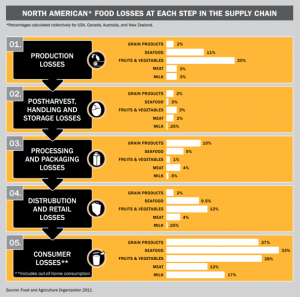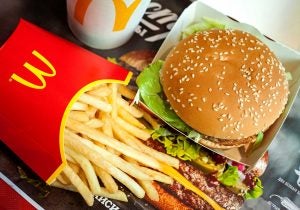Did you know that as much as 40 percent of food in the United States is wasted? Thrown out before it ever made it to the grocery store or sat rotting in the fridge until it was tossed with this week’s trash. Globally, about one-third of the food produced is “wasted,” or thrown out for various reasons. Yet, this is an ugly duckling that many consumers just won’t face.
Consumers expect perfection. Whether that is something we’ve been trained to do by retailers, or something we’ve begun to demand on our own, it is a huge problem. Food is not perfect. It is the nature of the beast — not every carrot will come out perfectly straight, not every bell pepper will ripen to complete red, and some apples might have a bruise. However, consumers are rejecting these products, claiming that if they aren’t perfect in appearance, it may somehow affect the quality or nutrition of the product.
Both retailers and farmers have responded to these consumer demands and are leaving perfectly good products in the field because they don’t meet the perfectionist standard. Impacts to the development of fresh products has also occurred as a result of this perception, as genetics of products are focusing more on ability to withstand harvest, storage, shipping, and display in stores rather than focusing on the taste or nutrition of the product.
All of this can impact the American food system, yet the largest losses in the food supply chain still occur at the consumer level.

Some losses occur because of lack of portion control, over-consumption issues, and cheap food. Americans place less value on food since they know each time they enter the grocery store they have an abundance of choices and the product they just threw out will be easily available again. There is little inherit value to food (unless you have faced food insecurity, as these individuals are often more careful with waste), and therefore most consumers take advantage of an abundant food supply.
Because of this, consumers are more likely to waste food at home and reject less-than perfect food at the store.
Americans also waste more food because we overfill our plate. Oftentimes, our eyes are too big for our stomachs, and we purchase and prepare more food than we could (or should) eat in a given time. This leads to fresh food being thrown out after it has gone bad, or cooked food going in the trash because we made too much. Large portion sizes don’t just happen at home, but also in restaurants and other dine-out options. Americans consume as much as 1,000 more calories a day than other countries, and retailers cater to this with above average portion sizes — think McDonald’s “Super Size” campaign.

The issue is not just related to simply wasting food but the inherit issues that comes with this waste.
Landfills account for 17 percent of methane emissions in the U.S., and the tons of food waste coming from consumers, in addition to the waste at retail establishments and distribution centers, are adding to this critical issue. In addition, it takes resources to produce food. Water, land, fertilizer, labor, fuel, supplies — anything used in the production of a food product, disposable or not, is wasted when the food is wasted. If we could reduce the food waste in the U.S., our productivity on a per acre basis would increase and we could feed more people. Some estimates say that just a 15 percent reduction in food waste could feed an additional 25 million people.
So how do we solve this problem?
- Be OK with less than perfection! Start supporting companies that resell perfectly good produce (even the “ugly” ones), like Misfits Produce. Even better, start communicating with retailers with your money that perfect appearance isn’t the sole buying factor for food. Purchase the “ugly” produce, the apple with a slight bruise, or the twisted carrot, or else it might be thrown out.
- Be conscious of your food purchases. Only purchase what you can consume in a reasonable amount of time, before food spoilage occurs. Plan out meals and purchase the necessary ingredients while trying to use the product in multiple meals so you can use all of it (like a whole head of lettuce, or a whole bag of carrots).
- Eat leftovers! Try to prepare meals and portion sizes that leave sufficient enough left-overs for lunch the following day, or to be incorporated into another meal instead of throwing it out.
- Compost your own waste. If you have biodegradable products to throw out, why not compost it yourself? Although this won’t provide an exceptional reduction of GHG emissions related to decomposing food, it will allow those products to be recycled to your lawn or garden rather than simply sitting useless in a landfill mixed with products that won’t breakdown.
Michelle Miller, the Farm Babe, is a farmer, public speaker and writer who has worked for years with row crops, beef cattle, and sheep. She believes education is key in bridging the gap between farmers and consumers.



